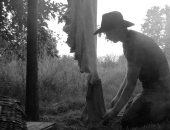
 1
1




 1
1




Zone 9b








Country oriented nerd with primary interests in alternate energy in particular solar. Dabble in gardening, trees, cob, soil building and a host of others.




Zone 9b








Life is too short or my list is too long, not sure which.
 1
1








Life is too short or my list is too long, not sure which.




 1
1




Wyatt Barnes wrote:I do remember someone saying that tumbling in a cool dryer with short pieces of wood to work the hide would make it pliable. Didn't get a chance to try it myself so I have no first hand experience with it.




Joe Camarena wrote:I've also identified a market that would purchase them if they are soft and subtle.
I do remember someone saying that tumbling in a cool dryer with short pieces of wood to work the hide would make it pliable.

Zone 9b





Hans Albert Quistorff, LMT projects on permies Hans Massage Qberry Farm magnet therapy gmail hquistorff








David Miller wrote:Um, or build your own kit. I'm relatively certain that there is a reason that the 1983 Mother Earth News article entitle "How to tan a rabbit hide" is consistently referenced. I have a freezer full and 15 days until I move to my farm, I'll get back to you on my personal testing.









 2
2




Order copies of my book, Dairy Farming: The Beautiful Way at
www.createspace.com
Help spread the word! Thanks!
struggle - hustle - soul - desire




Zone 9b

 1
1




Juniper Zen wrote:Adam, thanks for the details. What is the purpose of the egg soak?
Order copies of my book, Dairy Farming: The Beautiful Way at
www.createspace.com
Help spread the word! Thanks!
struggle - hustle - soul - desire








Raine Hogan wrote:But it was worth it when the bratty kid in the bunch wanted to know what kind of animal I was working on, and I told him that I had hit the neighbor's dog that wouldn't stay out of the road and I needed to get rid of the evidence before they got home from work. Oh and the meat went into the stew that was on the stove.
You should have seen his face!
How permies.com works
What is a Mother Tree ?
















Kyrt Ryder wrote:Is there any reason one can't just use a power drill to get into the skull for brain tanning?

|
Don't destroy the earth! That's where I keep all my stuff! Including this tiny ad:
A rocket mass heater heats your home with one tenth the wood of a conventional wood stove
http://woodheat.net
|



